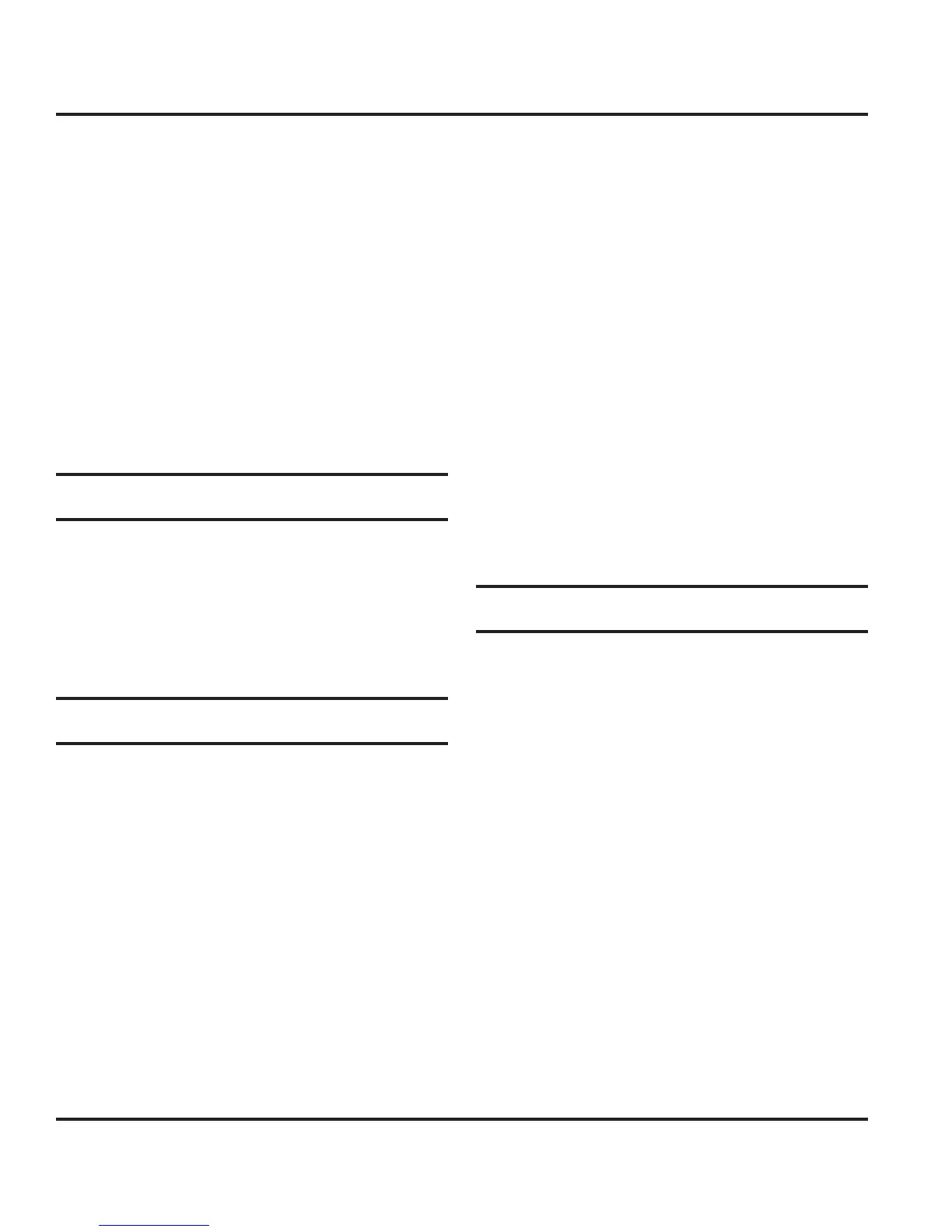Hunter e36 • Sails and Rigging
12.4
— the lazy sheet — should also be attached to the clew
of the spinnaker , led forward in front of the headstay,
and then back on the other side of the boat — outside
the shrouds and lifelines — to another turning block
positioned just forward of the stern pulpit. Then take that
sheet and lead it to a winch, with the slack in the sheet.
Now you are ready to hoist the spinnaker. Start by
heading off to a square run. Leave the mainsail fully
out during the hoisting procedure as it will blanket
the spinnaker and keep it from filling until you are
ready for it to be set. A good place to raise the sail
is from the leeward side, just ahead of the boom.
Once it is fully hoisted, slowly head up to your desired
course and pull in the sheet until the sail sets. Make
sure you have at least two turns of the sheet around the
winch.
Now you are off and sailing with your cruising spinnaker.
12.9 The Arch
As is customary on Hunters, the traveler is overhead, on
a stainless-steel arch, to keep the cockpit clear of the
obstruction and the boom clear of your head. The helms-
man can easily adjust the mainsheet traveler and the jib
sheets, although the mainsheet itself is at the companion-
way as illustrated above. The setup allows short handed
sailing when there are only a couple of people in the
cockpit or with an autopilot doing the steering.
12.10 B&R Rig
The B&R rig, utilized on the Hunter, eliminates the need
for a backstay to allow for a more efficient mainsail shape.
Fixed backstays are commonly being designed out of
today’s performance-oriented boats to allow the mainsail
to incorporate a full roach design - a more aerodynamic
shape both for racing and cruising performance.
To accomplish this, the B&R rig has 30 degree swept
spreaders, creating 120 degrees between each rigging
point. This tri-pod arrangement has excellent strength
for sailboat rigs, and has been used for years to support
huge radio towers.
Additional support is given to the B&R rig (and is unique
to it) with the addition of reverse diagonal rigging. For
example, the diagonals that you see beginning by the
top of the mast strut, ending at the tip of the spreader,
supports and stabilizes the upper section of the mast as
it creates a triangle with the upper shroud.
The B&R rig is designed to be pre-bent to further add
rigidity to the mast section and eliminate the need for
adjustable rigging (like backstay adjusters). This design
should prove more reliable than a rig with adjustable
backstays or runners, as there is less chance for error.
The large main, small jib, sail plan also eliminates the
need for large overlapping headsails (genoas), as the
driving power comes from the much improved shape and
size of the mainsail. This offers an easier tacking small
jib, creating good performance and more comfortable
sailing as it is less work for the crew.
As the large main is creating additional mainsheet and
leach loading, Hunter has included a cockpit arch whereby
the mainsheet and leech loads are directed to the strong
part of the boom (the out-board end) and is located at the
heaviest loading point of the mainsail. The cockpit arch
serves additional safety and comfort functions as hand-
holds and cockpit canvas attachment points.
B&R rigs have been used on thousands of sailboats, and
we are proud to incorporate this successful design on
your new Hunter.
12.11 Tuning the B&R Rig
(The information below is Hunter Marine’s opinion and
should not be considered complete or exact list of rec-
ommendations. Refer to OEM manual for more details)
The easiest method for tuning the B&R rig is to perform
step one as follows before the mast is stepped, with it
lying aft side down on two sawhorses. Begin with all rig-
ging slack. If the mast is already stepped, loosen all the
rigging, and then proceed to step one.
Start with all the rigging slack. Then induce the mast
bend by tightening the reverse diagonals (diamonds).
Measure the bend by tensioning a line or the main hal-
yard between the masthead and the gooseneck. The
maximum amount of bend should be no more than
8” [203mm] for the standard rig and no more than 2”
[50mm] for the furling mast. Measured perpendicular
from the aft face of the mast to the halyard at the deep-
est part of the bend. It can be less than that based
on the sail shape and your own preference. The bend
should also be evenly distributed along the mast to give
a smooth shape. Keep in mind that bending a furling
mast may make it more difficult to furl and will not do
much to flatten the sail as in a standard rig. It is very
important that the mast also be straight from side to side
1.

